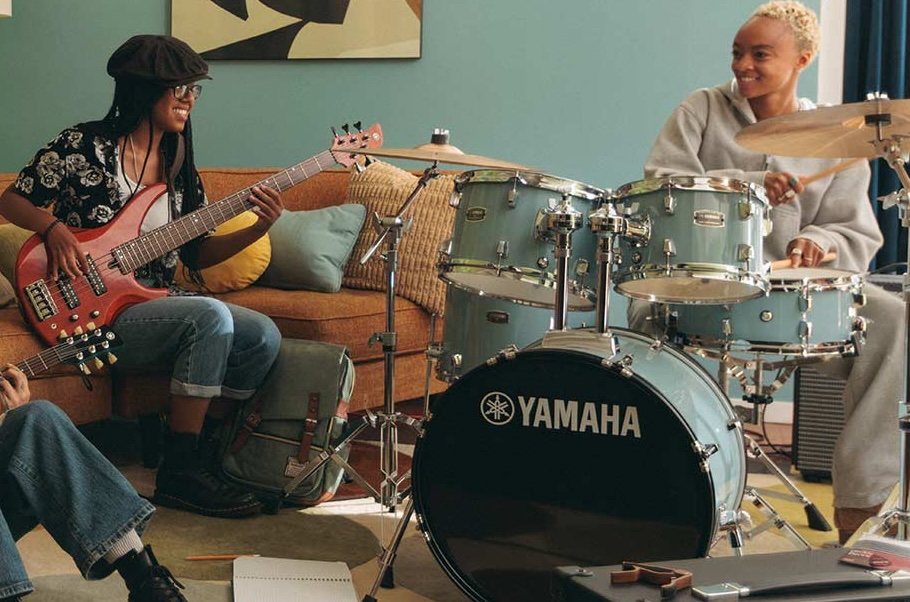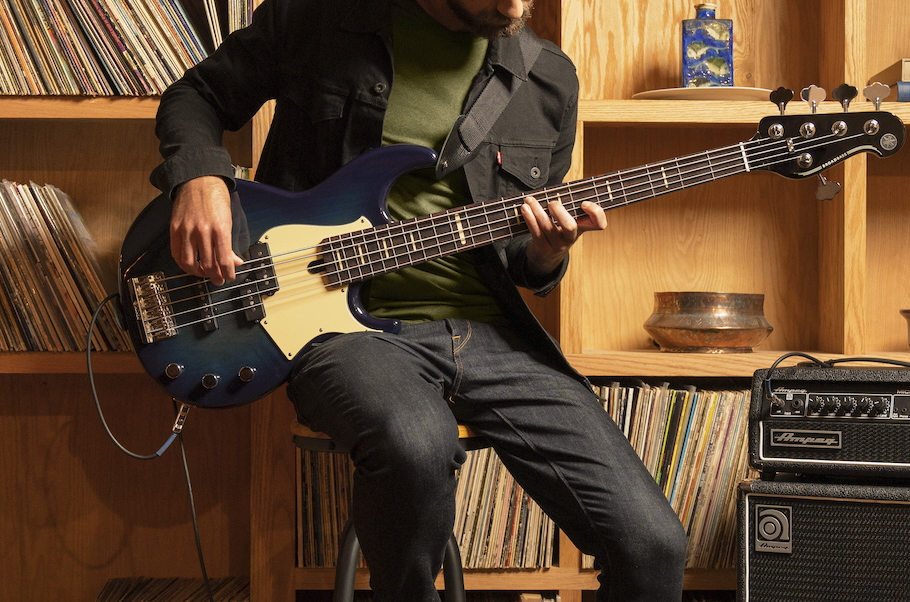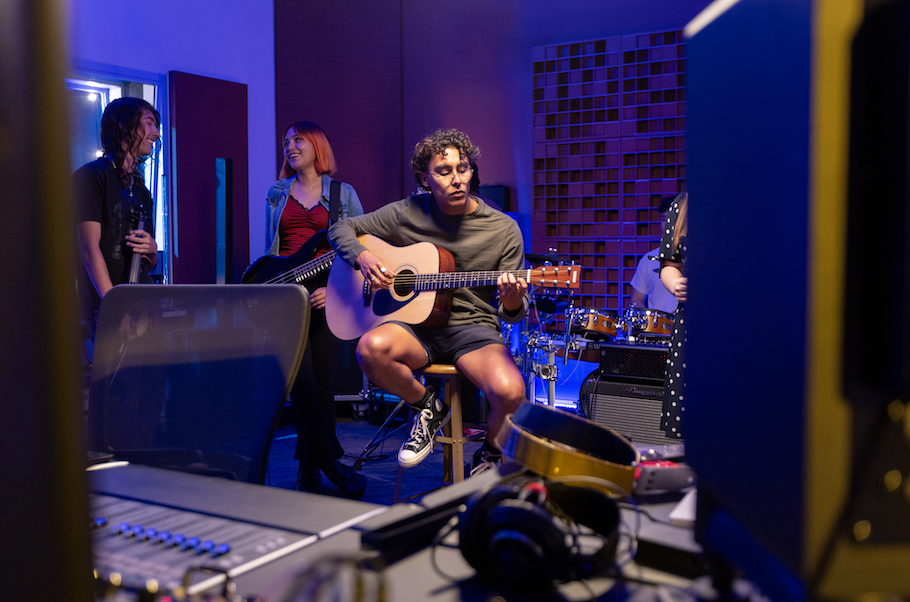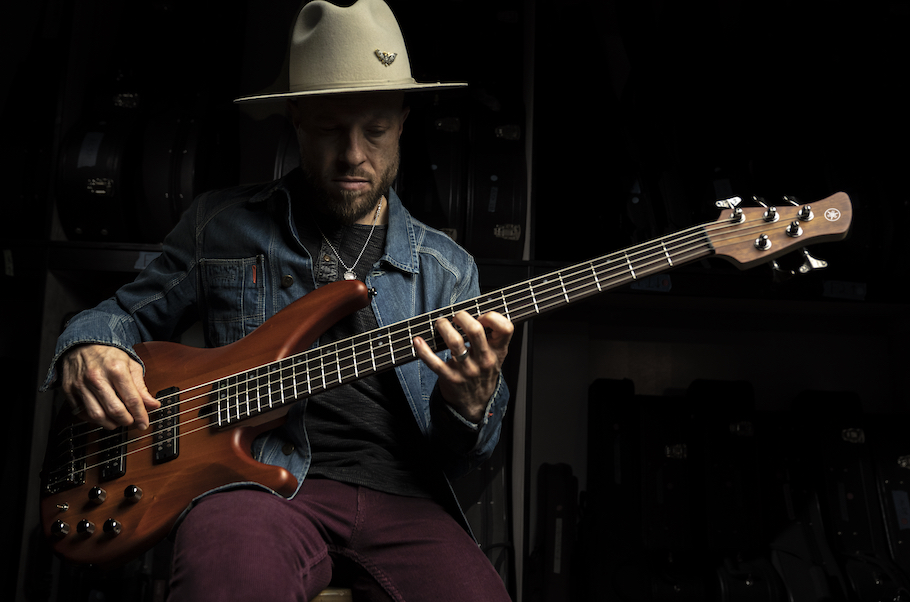Dynamic Bass Playing
Bring subtlety and swagger to all the right places.
Consider the importance of volume. When you whisper, people can ignore you or lean in closer. If you shout, you get attention, both wanted and unwanted. Our volume dramatically influences how listeners receive our statements, reactions, questions and answers. How loudly you speak can be just as important as what you say.
Music is conversation, and playing in a band is a real-time group discussion with instruments. Sometimes everyone talks at once; other times, there’s a clearly defined hierarchy that makes room for each voice. In normal conversation, of course, everyone is free to contribute or stay silent, but in music, bass players and drummers are usually expected to provide continuous rhythmic and harmonic support for guitarists, keyboardists and other soloists. We are the backbone of the ensemble, and we do our jobs better when we play with conviction. But understanding group dynamics (that is, the interplay between musicians) and musical dynamics (the strategic use of volume) can bring nuance and sophistication to our performances.
Let’s take a closer look at how this works specifically for bassists.
PHRASING AND PACING
Start by simply listening to yourself. In your head, re-read the first couple of paragraphs above. Notice where you pause, what you emphasize, and which sentences you sew together or stumble over.
Now read it once more, but this time, be silly. Stretch phrases. Skip words. Read it like an auctioneer. Pretend you’re singing an opera, doing a play-by-play at a football game, or telling a spooky story at a campfire.
Becoming familiar with your own phrasing, pacing and preferences helps you notice other musicians’ sonic signatures and develop your own. Just as your voice changes depending on who you’re talking to, you can tailor your playing to conjure certain emotions or fit specific situations.
Here’s an example of two bass parts for the same chord progression. As you can hear, the first audio clip is busy and interactive compared to the second one’s sparser line and longer notes. Both tracks are recorded with the same Yamaha BB435, but they feel different and have different intentions. Put your own spin on this track by playing along to it on YouTube.
LOUDER AND SOFTER
A truly dynamic bassline changes throughout a song, spotlighting each section and responding to other instruments (as well as the vocalist, if there is one). In the two audio clips below, we hear the Yamaha BB435 holding down the low end on a demo of a song called “Let Me Sleep On It” (not the Meat Loaf version.) Positioning my picking hand close to the neck gave me a tone reminiscent of synth bass, which blended well with the track.
In the first of these clips, the bass part keeps time, but it doesn’t distinguish much between verses and choruses. There’s very little variation in volume.
In the second audio clip, however, the bass part begins the song by staying out of the singer’s way. (It’s always good to leave yourself lots of room to get busier later on!) At the first chorus, around the 0:51 mark, the bass interacts with a new drum part, returning to its previous level for the verse at 1:15 and getting bigger again for the chorus at 1:39. Notice how it drops out altogether before returning for the bridge and the last verse. Finally, at 2:56, there’s a fill followed by a final verse with big bass before an ending that’s coordinated with the keys.
EBB AND FLOW
When you talk to a friend or send text messages, notice the conversation’s dynamics. Do you interrupt each other? Is one of you a better listener? Do you finish each other’s sentences? Perhaps you change roles depending on who you’re talking to and what you’re talking about. Next time you’re on stage or watch a band, pay attention to how the musical conversations ebb and flow within a song and over the course of an evening.
It’s fun to watch how masterful musicians adapt in a group context, too. Most classical music pieces, such as this excerpt from the 4th movement of Anton Bruckner’s Symphony No. 4 (“Romantic”) are capable of extreme dynamics, from a whisper to a roar. James Brown masterfully directed musicians to step up, accent or lay out, with devastating effect. Anyone who’s ever played with a singer knows about staying out of the way — taking a solo and then melting back into the ensemble. Most jazz musicians learn to flow within the context of a song’s arrangement, staying open to whatever might occur. In this live Pat Metheny Group performance, for example, you can hear bassist Steve Rodby expertly shepherding each section of “Phase Dance” as it unfolds, taking just enough space.
Many of us instinctively lay back on a ballad and step on the gas for high-energy choruses. Lean into those inclinations and notice when the opposite might be true. Just as an ALL-CAPS COMMENT on social media “sounds” loud and rude, a performance without variation can be tough for listeners and tiresome for musicians.
FAST, BUT QUIET
A teacher once told me how his use of dynamics got him a high-profile bass gig — by accident. He was jamming with a band that already had a great bassist, but when he played an uptempo bass part without getting louder, it made such an impression that the band offered him a tour and recording dates on the spot.
It can feel natural to play harder (and therefore, louder) at fast tempos. Many of us tense up and dig in when we’re feeling heightened emotions, which can be intensified by the pressure of going for the perfect studio take or playing in front of an audience. But technique and preparation give you more options.
To become aware of tension in your body, set a metronome to a comfortable BPM and gradually increase the tempo. Notice when your picking-hand wrist gets stiffer, your forearms tense up and your grip on the pick gets tighter, or your alternating index and middle fingers have trouble keeping up. When you reach your limit, stop, note the tempo, slow the metronome down a little and try again while taking deep breaths. You may be surprised at what’s possible when you are not breathing at the same BPM as the music.
DYNAMICS DO’S AND DON’TS
Here are a few additional do’s and don’ts when it comes to playing bass dynamically:
- Playing hard/digging in shouldn’t be your default setting. Instead, consider it to be a particular type of tone for the toolbox.
- Don’t always have the bass super loud (unless you’re playing a genre that demands it, like reggae). Come in and out at the right times, and leave them wanting more!
- At live gigs, turn down your bass and turn up your amp. Let the amp do the heavy lifting.
- To increase your dynamics, try not to use too much compression, which evens out volume by making soft sounds louder and loud sounds softer. Check out this posting for more information about how to use compression on bass.
- EQ also makes a big difference when it comes to dynamics. With the right mids, for example, you can turn down and still be articulate; too much low end/muddy tone is a no-no.
IT’S A TEAM SPORT
Music is a team sport. Awareness and good technique help you to be efficient and stay relaxed, and knowing the music inside and out will help you maintain control, even at fast tempos. Everyone in the band benefits when we are all on the same page, engaging in a conversation that can go anywhere the music wants to take us.















